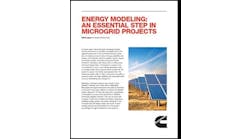Where do microgrids fit into the Obama administration’s new plan to reduce carbon dioxide emissions? It’s not clear and some are wondering why.
“I find the draft regulations to be written in a vacuum, as if the electricity/utility industry were not undergoing fundamental, lasting change. There is really no mention of this whatsoever,” said Dan Delurey, executive director of the Microgrid Alliance.
The Environmental Protection Agency on June 2 released the United States’ first- ever rule to reduce carbon dioxide emissions from existing power plants. Still in draft form, the rule calls for a 30 percent reduction by 2030. States must create plans to meet the requirement.
Energy efficiency has won a lot of attention as one of the four key building blocks in the federal plan. In fact, the words ‘energy efficiency’ appeared 227 times in the 645-page EPA proposal, according to Opower.
The number of microgrid mentions? Zero – even though advanced microgrids are a low-carbon energy resource.
To be fair, microgrids have only recently become a hot technology (although they’ve been around for decades.)
And it’s important to note that while microgrids are not mentioned by name, the pieces that make up a microgrid can be found in the EPA proposal.
“I think that the immediate takeaway for microgrids is that there is a huge opportunity, but that we need to make sure that states focus on microgrids in the planning process,” said C. Baird Brown, a partner at Drinker Biddle & Reath and counsel to the Microgrid Resources Coalition.
Brown said that the measures recommended by the EPA include:
· Demand-side energy efficiency programs
· Switching to natural gas
· Energy storage technology
· Expanding renewables
· Energy conservation
“Our job is to highlight that a combination of all of the above with smart controls (a microgrid) does a better job than doing them individually and also makes the grid more efficient,” Brown said.
States will play a key role in determining the right carbon-reducing mix of electric resources within their borders. The draft rule requires that by June 30, 2016 they file state implementation plans (with possible two-year extensions.) Separately, several states are looking at policies to encourage microgrids to avert power outages. It is possible that the two efforts will dovetail.
“Given the overall thrust of the proposed rule to allow flexibility in compliance and the nature of the options outlined, the rule certainly would create opportunities for microgrids to contribute strategically to cost-effective solutions for achieving EPA’s greenhouse gas emissions reductions,” said Larisa Dobriansky, General MicroGrids’ senior vice president for legal, regulatory and policy affairs.
Combined heat and power, an efficiency play used by many microgrids, is discussed within the draft rule. Advocates of this approach see a clear place for CHP and related district energy in the state plans, especially where solar and wind resources are marginal.
“With efficiency now properly recognized, microgrids that feature district energy/CHP will be highly prized to deliver not just reliable power and heat 24/7, but also for their balancing capacity and other ancillary services that augment and supplement integration of renewable and intermittent sources,” said Robert Thornton, president & CEO of the International District Energy Association.
The bottom line for microgrids? As it now stands, the EPA rule certainly furthers the industry’s prospects. But microgrids will compete against a lot of other resources for position in the state plans.
“The regulations could very likely create a great opportunity for microgrids, but it will not come automatically,” Delurey said. “It will have to be created through education of both federal and state policymakers.”
How do you think the new EPA regulations will influence microgrids? Join Microgrid Knowledge’s LinkedIn group and let us know!






